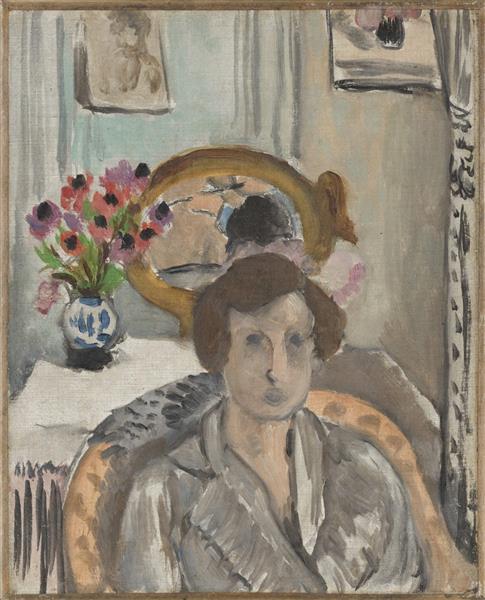Description
In the work "Woman with Anemones" painted in 1919 by Henri Matisse, we are introduced to a universe of color and composition that evidences the artist's distinctive hallmark and his unmistakable Fauvist style. The painting, created during a period when Matisse was consolidating his artistic language, allows us to glimpse not only the mastery in the use of color but also the painter's ability to capture the essence of his models and surrounding elements with an economy of lines and a vibrant chromatic palette.
The protagonist of the work is a woman sitting in a relaxed position, who, with a contemplative attitude, holds a bouquet of anemones. This central figure is represented with a technique that combines bold strokes and a direct and saturated application of color, characteristics that convey a sense of immediacy and vitality to the observation. The woman, immersed in her environment, seems to blend with the background, in a harmonious play of colors and shapes. The simplicity of her attire contrasts with the richness and dynamism of the bouquet of flowers, whose lively crimson and green give the work an emotional focus that captures the viewer's attention.
The background of the painting, composed of a chromatic variety ranging from deep blues to bright yellows, is treated with a technique that recalls post-impressionist studies but with a freedom of expression that is purely Fauvist. Matisse uses color not as a subsidiary means but as an end in itself, granting each tone an autonomy that allows figurative and abstract elements to coexist in a unified and ornamental field of vision.
As for the composition, Matisse once again demonstrates his ability to balance forms with a sense of order and serenity. Although the scene may seem simple in its structural design, it is the subtle interaction of forms and colors that produces a complex and rich visual experience. The deliberate use of soft grays in the woman's skin and the neutrality of the white background create a platform on which the more saturated colors of the anemones stand out with powerful intensity, guiding the observer's gaze through the composition with natural fluidity.
This work is also a reflection of a more introspective period in Matisse's life, who, affected by World War I and with deteriorating health, found in the study of the human figure and still life a sense of solace and meditation. "Woman with Anemones" is, in this sense, a testament to how art can serve as a refuge and a means of deep emotional expression.
With "Woman with Anemones," Matisse not only reaffirms his position as one of the main exponents of Fauvism but also invites us to explore the confluence between color and form, background and figure, providing a work that is both a visual pleasure and a catalyst for aesthetic reflection. This painting is not merely a static image but a vibrant symphony of colors and forms that captures, with apparent simplicity, the complexity of life and the beauty of the moment.

